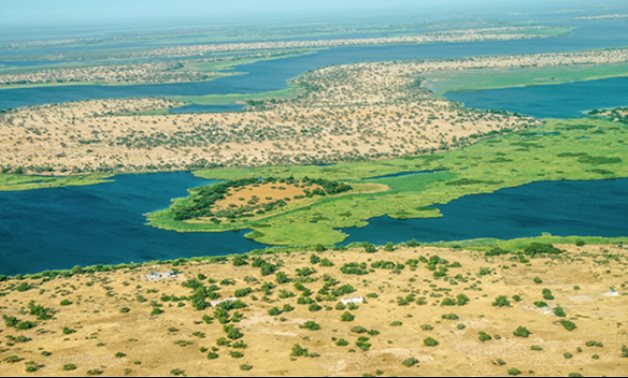
Aerial view over the Lake Chad region that clearly shows symptoms of desertification. UNDP Chad/ Jean Damascene Hakuzimana
CAIRO – 17 June 2021: Desertification is a phenomenon that ranks among the greatest environmental challenges of our time but most people have not heard of or understood it.
Although desertification can include the encroachment of sand dunes on land, it does not indicate the progression of deserts. Instead, the reason for the progress of deserts is the continuous degradation of dryland ecosystems due to human activities that include unsustainable agriculture, mining, overgrazing, clearly logging and climate change.
Desertification occurs when:
-Trees and vegetation that bind the soil are removed, which occurs when trees and shrubs are stripped of firewood and timber or land is cleared for planting.
-Animals eat grasses and topsoil with their hooves.
-Intensive farming where nutrients are depleted in the soil.
-Wind and water erosion exacerbates the damage as the topsoil is carried away and leaves behind a mixture of sterility and sand.
It is a combination of these factors that turns degraded land into desert.
The impact of desertification on nature and humans
Desertification is a global issue with serious implications for biodiversity, ecological integrity, poverty eradication, social and economic stability and sustainable development globally.
Drylands are indeed fragile and when they deteriorate the impact on people, livestock and the environment can be devastating. About 50 million people may be displaced over the next 10 years as a result of desertification.
The issue of desertification is not new. It has played an important role in human history and contributed to the collapse of many large empires and the displacement of the local inhabitants.
Today, however, the rate of arable land degradation is estimated to be between 30 and 35 times the historical rate. About two billion people depend on ecosystems in dryland areas, with 90 percent of them living in developing countries.
In many underdeveloped countries, overpopulation is causing pressures to exploit dry lands for agriculture. These marginally productive areas have experienced overgrazing, where the land has been depleted and groundwater has been withdrawn.
When rural land is no longer able to support the local population, the result is mass migration to urban areas. The increased frequency and severity of drought caused by projected climate change is likely to further exacerbate desertification.
What can be done?
- Reforestation and tree renewal.
- Water management - supply or reuse of treated water, rainwater harvesting, desalination, or direct use of seawater for salt-loving plants.
- Stabilization of the soil through the use of sand fences, shelter belts, firewood and windbreaks.
-Increase of Farms Managed Natural Regeneration (FMNR), allowing a tree to grow naturally through selective pruning of shrub shoots.
- Remnants of pruned trees can be used as field cover thus increasing soil retention and reducing evaporation
Desertification, climate change and biodiversity loss were identified as the biggest challenges to sustainable development during the 1992 Rio Earth Summit.
The United Nations Convention to Combat Desertification, established in 1994, is the only legally binding international agreement linking environment and development to sustainable land management.
Parties of the convention work together to maintain and restore soil productivity, and mitigate the effects of drought in dry lands, arid, semi-arid and dry sub-humid regions, where some of the most vulnerable ecosystems are located.
The General Assembly declared that desertification and drought are problems of a global dimension as they affect all regions of the world, and that joint action by the international community is necessary to combat desertification and drought, especially in Africa. This was on June 17 that was named the "International Day to Combat Desertification and Drought" by its resolution 115/495 adopted in December 1994.
Comments
Leave a Comment